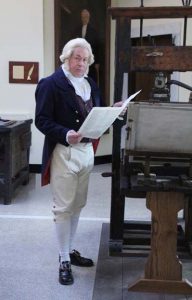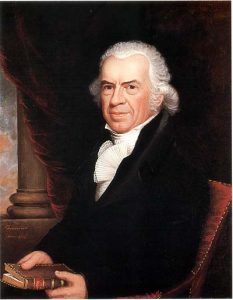by Kelly Strickland
The Eye on Houston: High School Documentary Photography project calls for students from Houston public high schools to submit photographs for display at the Museum of Fine Arts Houston (MFAH). The project prompts students to photograph the world around them and show their unique perspective for a chance to have their work displayed at the museum.
The project is a collaboration between the museum and the Houston Independent School District and has been running for 26 years.
The goal of the project is to document and celebrate “Houston’s diverse neighborhoods.”1 The project emphasizes diversity by partnering with schools from across the city. As Houston is a large, sprawling city, museum visitors are going to see parts of it that they have never seen before in these photographs.
Students are asked to document their daily lives, a prompt that allows a lot of  freedom to interpret in their own way and show off aspects of their local area that speak most to the student. This year there were pictures of friends, family, nature, buildings and businesses. The student names the photograph and can choose to include a description. All of the photos are printed on an inkjet printed and framed in a uniform way.
freedom to interpret in their own way and show off aspects of their local area that speak most to the student. This year there were pictures of friends, family, nature, buildings and businesses. The student names the photograph and can choose to include a description. All of the photos are printed on an inkjet printed and framed in a uniform way.
The project itself is fairly easy and accessible for an average student to complete. Most high school students are going to at least have access to a cell phone with a camera, while others might have access to more traditional cameras. The project doesn’t require the students to be in a photography class or a have a background in photography. However, it is a way to give students who are interested in photography and taking those classes an avenue to compete and showcase their work.
 The project is a great opportunity for students to be the artist and see their work hung alongside major works of art. The exhibit runs for almost a year which gives students and their families plenty of time to visit. It is then quickly replaced by the chosen photographs for the next year. By partnering with the public schools across the city, the museum reaches a population that might not be familiar with the museum. Given the large size of the city, it’s not always easy to travel to the museum, but the project gives students and their families more of a reason to do so.
The project is a great opportunity for students to be the artist and see their work hung alongside major works of art. The exhibit runs for almost a year which gives students and their families plenty of time to visit. It is then quickly replaced by the chosen photographs for the next year. By partnering with the public schools across the city, the museum reaches a population that might not be familiar with the museum. Given the large size of the city, it’s not always easy to travel to the museum, but the project gives students and their families more of a reason to do so.
The 2021 exhibit is displayed in two locations – the newly built Kinder  Foundation Education Center Gallery and the MFAH Visitor Center. The Kinder Building is a recently completed eight-year project to expand the museum. Putting the exhibit inside this new building as well as its usual placement will give it more visibility. The original location in the Visitor Center is near the museum’s café, but is getting less foot traffic as the café is closed due to Covid-19.
Foundation Education Center Gallery and the MFAH Visitor Center. The Kinder Building is a recently completed eight-year project to expand the museum. Putting the exhibit inside this new building as well as its usual placement will give it more visibility. The original location in the Visitor Center is near the museum’s café, but is getting less foot traffic as the café is closed due to Covid-19.
The success of the project is shown in the number of submissions that the exhibit receives. In 2019 the museum received over 700 submissions with 93 chosen for showing.
1https://www.mfah.org/exhibitions/eye-on-houston-high-school-documentary-photography-2021/

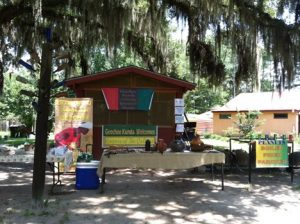
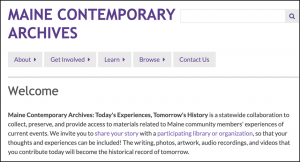
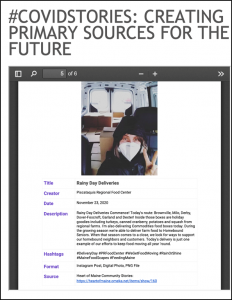 project, cultural heritage professionals demonstrate to young learners (and older learners!) that archives are dynamic environments that document history as it happens, and that community submission and engagement are key parts of that process. The website’s
project, cultural heritage professionals demonstrate to young learners (and older learners!) that archives are dynamic environments that document history as it happens, and that community submission and engagement are key parts of that process. The website’s 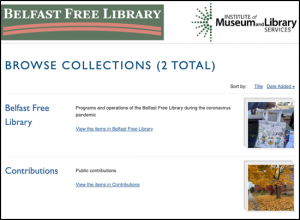 they collect and display. But these institutions don’t just rely on contributions; they create their own materials. For example,
they collect and display. But these institutions don’t just rely on contributions; they create their own materials. For example, 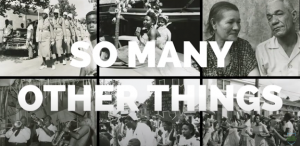
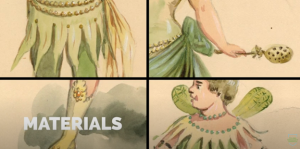
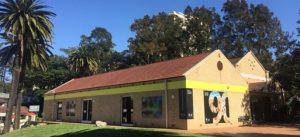
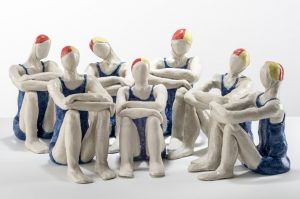 unassuming building. While modest, the structure houses an impressive collection of Australian art, including paintings, drawings, photography, ceramics and beach ephemera (think surfboards and vintage bathing attire). The museum owns pieces by well-known Australian artists such as Margaret Preston, Thea Proctor, Will Ashton and Lloyd Rees, as well as works by aboriginal and contemporary artists. It also offers a wide assortment of cultural programs, such as films, artist meet-and-greets, live music and art classes. Funding by the Northern Beaches Council, the local government organization overseeing the area, and other sources allows MAG&M to host visitors without charging an admissions fee, and its location is a perfect escape from the Australian summer heat.
unassuming building. While modest, the structure houses an impressive collection of Australian art, including paintings, drawings, photography, ceramics and beach ephemera (think surfboards and vintage bathing attire). The museum owns pieces by well-known Australian artists such as Margaret Preston, Thea Proctor, Will Ashton and Lloyd Rees, as well as works by aboriginal and contemporary artists. It also offers a wide assortment of cultural programs, such as films, artist meet-and-greets, live music and art classes. Funding by the Northern Beaches Council, the local government organization overseeing the area, and other sources allows MAG&M to host visitors without charging an admissions fee, and its location is a perfect escape from the Australian summer heat.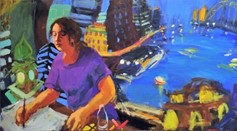 virtual and inspired. Instead of opening its special exhibition, MAG&M offered a suite of new virtual programs, including short films, “create with MAG&M” learning content, online exhibitions and digital copies of former exhibition catalogues. They also took to Instagram, using Instagram stories to showcase a work from their collection each day for 90 days. A new video was produced to highlight the Treasures from the Vault exhibition (linked below). Finally, their new acquisition, a painting of Sydney Harbour by Archibald Prize winning artist Wendy Sharpe, titled Blue Harbour, was unveiled on Facebook and Instagram on June 14th.
virtual and inspired. Instead of opening its special exhibition, MAG&M offered a suite of new virtual programs, including short films, “create with MAG&M” learning content, online exhibitions and digital copies of former exhibition catalogues. They also took to Instagram, using Instagram stories to showcase a work from their collection each day for 90 days. A new video was produced to highlight the Treasures from the Vault exhibition (linked below). Finally, their new acquisition, a painting of Sydney Harbour by Archibald Prize winning artist Wendy Sharpe, titled Blue Harbour, was unveiled on Facebook and Instagram on June 14th.
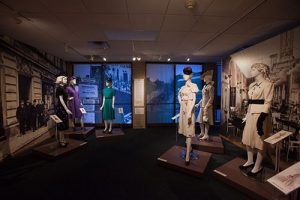 currently touring across the United States. For this unique exhibit, the Jewish Museum Milwaukee partnered with the Milwaukee Repertory Theater to create dresses based on Hedy Strnad’s designs. The museum’s goal was to do more than present Hedy and Paul’s story. Rather, “. . . completing this project for [Hedy was] a meaningful act of memorialization, as it [brought] Hedy’s talent and creativity into the current day” (UW-Milwaukee Digital Humanities Lab).
currently touring across the United States. For this unique exhibit, the Jewish Museum Milwaukee partnered with the Milwaukee Repertory Theater to create dresses based on Hedy Strnad’s designs. The museum’s goal was to do more than present Hedy and Paul’s story. Rather, “. . . completing this project for [Hedy was] a meaningful act of memorialization, as it [brought] Hedy’s talent and creativity into the current day” (UW-Milwaukee Digital Humanities Lab).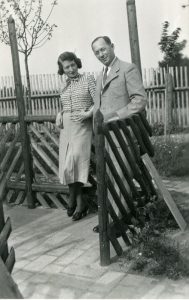 affidavit, necessary for he and his wife to escape Nazi-occupied Czechoslovakia. Paul also sent eight of Hedy’s dress designs, as a way of proving that the couple could secure an income if they were allowed to immigrate. Sadly, the couple were imprisoned before they could secure safe passage and were eventually murdered in a concentration camp. The letter and sketches were not discovered until 1997, when the Strnad’s of Wisconsin found them in the basement of their family home. They donated the documents to the Jewish Historical Society in Milwaukee. These items became part of the Jewish Museum Milwaukee’s permanent collection when it opened in 2008.
affidavit, necessary for he and his wife to escape Nazi-occupied Czechoslovakia. Paul also sent eight of Hedy’s dress designs, as a way of proving that the couple could secure an income if they were allowed to immigrate. Sadly, the couple were imprisoned before they could secure safe passage and were eventually murdered in a concentration camp. The letter and sketches were not discovered until 1997, when the Strnad’s of Wisconsin found them in the basement of their family home. They donated the documents to the Jewish Historical Society in Milwaukee. These items became part of the Jewish Museum Milwaukee’s permanent collection when it opened in 2008.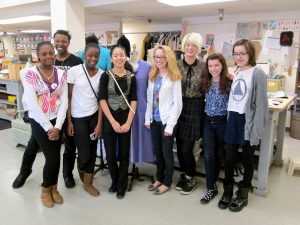 dresses as sources of inspiration, the Jewish Museum Milwaukee partnered with Arts@Large, a local arts education organization, and with Milwaukee Public Schools to allow a select group of 7th and 8th grade girls to take a behind the scenes look at the work that goes into costume designing. The eight girls who were chosen spent time with the staff of the Rep’s Costume Shop, where they learned more about Hedy’s dress designs and the hard work that went into designing and crafting these dresses. The girls were tasked with documenting their experience through photography and then, as a way of
dresses as sources of inspiration, the Jewish Museum Milwaukee partnered with Arts@Large, a local arts education organization, and with Milwaukee Public Schools to allow a select group of 7th and 8th grade girls to take a behind the scenes look at the work that goes into costume designing. The eight girls who were chosen spent time with the staff of the Rep’s Costume Shop, where they learned more about Hedy’s dress designs and the hard work that went into designing and crafting these dresses. The girls were tasked with documenting their experience through photography and then, as a way of 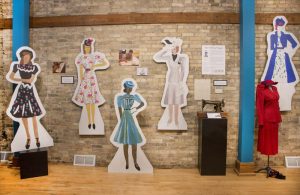 reflecting on all that they had learned, they were instructed to paint life-size self-portraits based on Hedy Strnad’s sketches. By allowing the girls this opportunity, the museum and Arts@Large not only gave them a space to showcase their own work (as each of their portraits were featured in an exhibition at the Arts@Large gallery), but also gave visitors the opportunity to see Hedy’s dresses worn by the next generation.
reflecting on all that they had learned, they were instructed to paint life-size self-portraits based on Hedy Strnad’s sketches. By allowing the girls this opportunity, the museum and Arts@Large not only gave them a space to showcase their own work (as each of their portraits were featured in an exhibition at the Arts@Large gallery), but also gave visitors the opportunity to see Hedy’s dresses worn by the next generation.